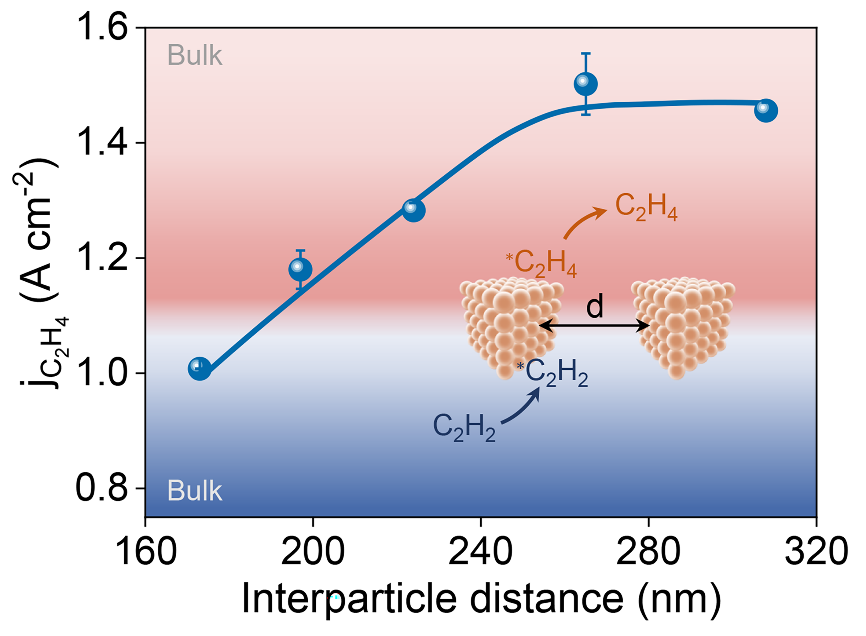Ethylene, a key feedstock for producing a wide range of commodity chemicals, is traditionally obtained through steam cracking of petroleum-derived hydrocarbons. Recently, the semi-hydrogenation of coal-derived acetylene to produce ethylene has emerged as a promising non-petroleum-based alternative. In particular, electrocatalytic acetylene semi-hydrogenation (EASH), driven by renewable energy, offers several advantages, such as using of water as a hydrogen source, operating under ambient reaction conditions, and producing low carbon emissions.
However, the practical application of ethylene electrosynthesis via EASH has been hindered by slow reaction rate, limited ethylene selectivity, and low energy efficiency. While previous studies have primarily focused on tuning catalytic active sites at the nanoscale and atomic scale, the critical role of mesoscopic mass transport within electrodes has often been overlooked.
In a study published in Angewandte Chemie International Edition, a research team led by Profs. BAO Xinhe and GAO Dunfeng from the Dalian Institute of Chemical Physics (DICP) of the Chinese Academy of Sciences (CAS) achieved ethylene electrosynthesis from acetylene at ampere-level current density by promoting interparticle mass transport.

Ethylene electrosynthesis from acetylene at ampere-level current density via promoting interparticle mass transport (Image by YAN Chuanchuan)
Researchers quantitatively demonstrated the crucial role of interparticle mass transport on EASH performance. By increasing the average interparticle distance of Cu cubes, they improved acetylene adsorption and ethylene desorption, leading to enhanced EASH performance. The Cu cube electrode with a large average interparticle distance of 265 nm exhibits an ethylene Faradaic efficiency of 97.4% at a current density of 1.0 A cm−2 and a maximum ethylene partial current density of 1.5 A cm−2 in an alkaline membrane electrode assembly electrolyzer.
Moreover, researchers revealed that increasing the interparticle distance of Cu cubes effectively promotes mass transport, enabling efficient ethylene electrosynthesis under industrially relevant conditions.
"Our study demonstrates the key role of mesoscopic mass transport in electrocatalysis," said Prof. GAO. "This factor should be considered in designing high-performance electrocatalytic systems."